Top 20 NFL Sooners, No. 1: Adrian Peterson
In the past 20 years, the Oklahoma Sooners have experienced arguably their most productive era ever in the NFL Draft.
From the 2000 to 2019 drafts — the entirety of the Bob Stoops and Lincoln Riley years — OU has had 95 players drafted.
Using today’s 7-round comparison, that’s more than any other two-decade era in school history. In the 1970s and ‘80s, OU had 131 players drafted, but only 88 were selected in the first seven rounds.
In the last 20 years, the Sooners have produced some historically good players. Every day leading up to this year’s NFL Draft (today, Friday and Saturday), SI Sooners presents the Top 20 NFL Sooners of the last 20 years.
———
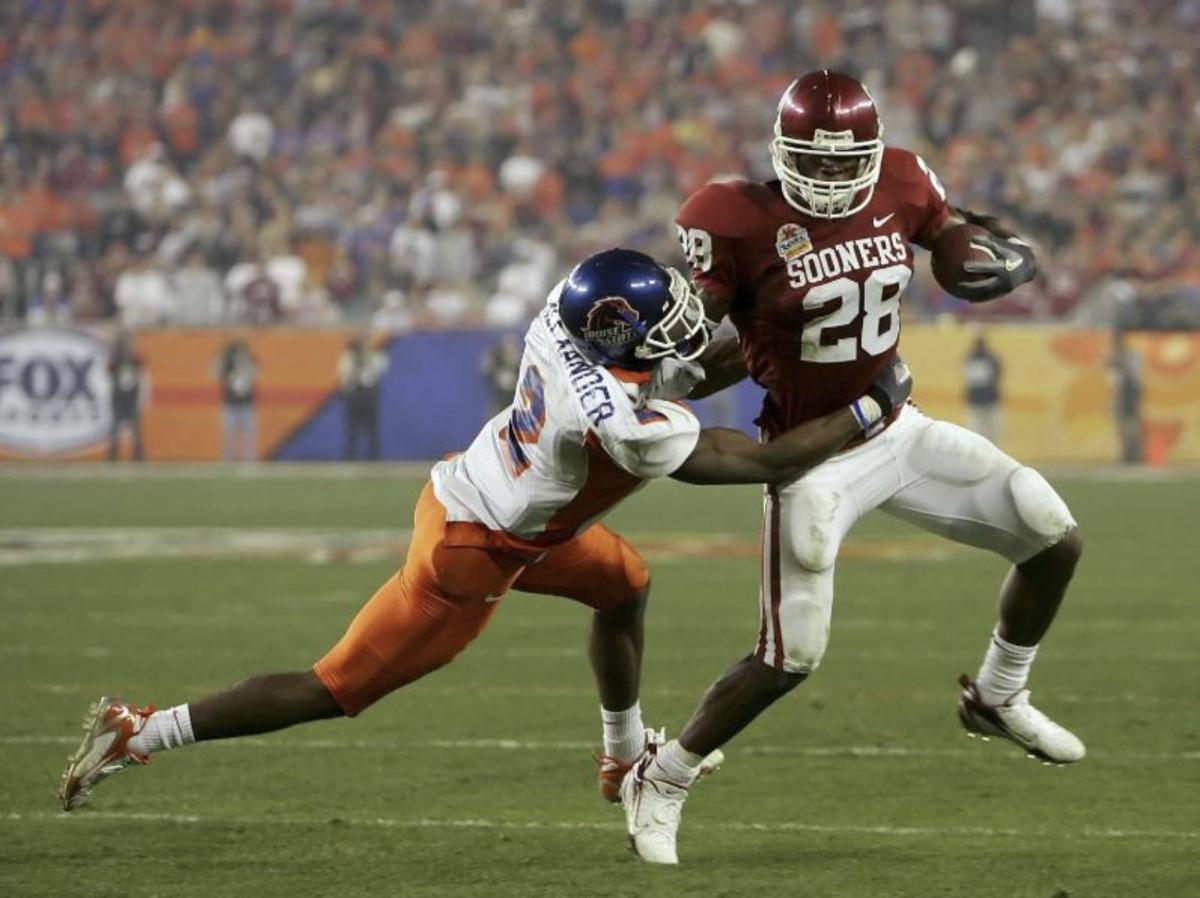
Adrian Peterson was on an unofficial recruiting visit to Oklahoma, and he really couldn’t believe what he was seeing.
Jerry Schmidt, the Sooners’ strength coach in 2003, was grinding his players into dust, screaming at them when they fell out, then grinding them even more.
“I was like, ‘Ooh wee! This is the type of stuff that these guys are doing?’ ” Peterson said. “They’d be crazy to bring a recruit over here to see this, to see what these guys are doing, man. That’d scare a lot of people away.
“But to me, that just made me love it even more. I was able to understand how OU beat the crap out of Texas every year.”
In a 30-minute phone conversation with SI Sooners this week, Peterson recalled how watching the teams work out transformed his passion for the Longhorns into a passion for the Sooners, and how that passion for hard work turned him into one of the greatest running backs the game of football has ever seen.
“I clearly felt like Texas normally had the best talent offensively and defensively,” Peterson said. “Because I’m from Texas. I loved Texas football. I was Longhorns all the way until things just changed for me. I loved Texas football. But I was able to open my eyes, through my own lens, and see, ‘OK, these are the reasons why Oklahoma is better than Texas. These are the reasons why Oklahoma is a better fit than USC would be, or LSU.’ “
Peterson, who is currently quarantine training at his gym in Houston for a 14th NFL season, recalls waiting outside Darrell K. Royal-Texas Memorial Stadium, looking up into the seats while waiting for his uncle, Longhorn tight end Chris Smith, and promising himself one day he’d be playing there, too.
Instead, he became an OU legend, the fourth-leading rusher in school history (4,041 yards) despite playing the equivalent of 2 1/2 seasons, the Sooners’ single-season record-holder with 1,925 yards as a true freshman, and probably Oklahoma’s most accomplished NFL player ever.
Peterson ranks fifth in NFL history with 14,216 yards and fourth all-time with 111 rushing touchdowns. He’s a four-time first-team AP All-Pro (three-time second-team), a two-time Bert Bell Award winner as the NFL player of the year, was the NFL MVP, Offensive Player of the Year and Comeback Player of the Year in 2012, and he’s been voted to seven Pro Bowls. Some suggest it was actually Peterson who ruined the Pro Bowl for everyone because when he came into the league, he only knew how to play at an ultra-competitive speed.
Football played any other way isn’t really football.
Among Sooners, only Lee Roy Selmon, who’s in both the College Football Hall of Fame and the Pro Football Hall of Fame, has a place in Peterson’s neighborhood.
And now here’s Peterson, 35, needing 1,054 yards to pass Barry Sanders and chasing still-active Frank Gore for the NFLs’ No. 3 career rushing spot behind Emmitt Smith and Walter Payton.
Don’t bother telling him he won’t get there.
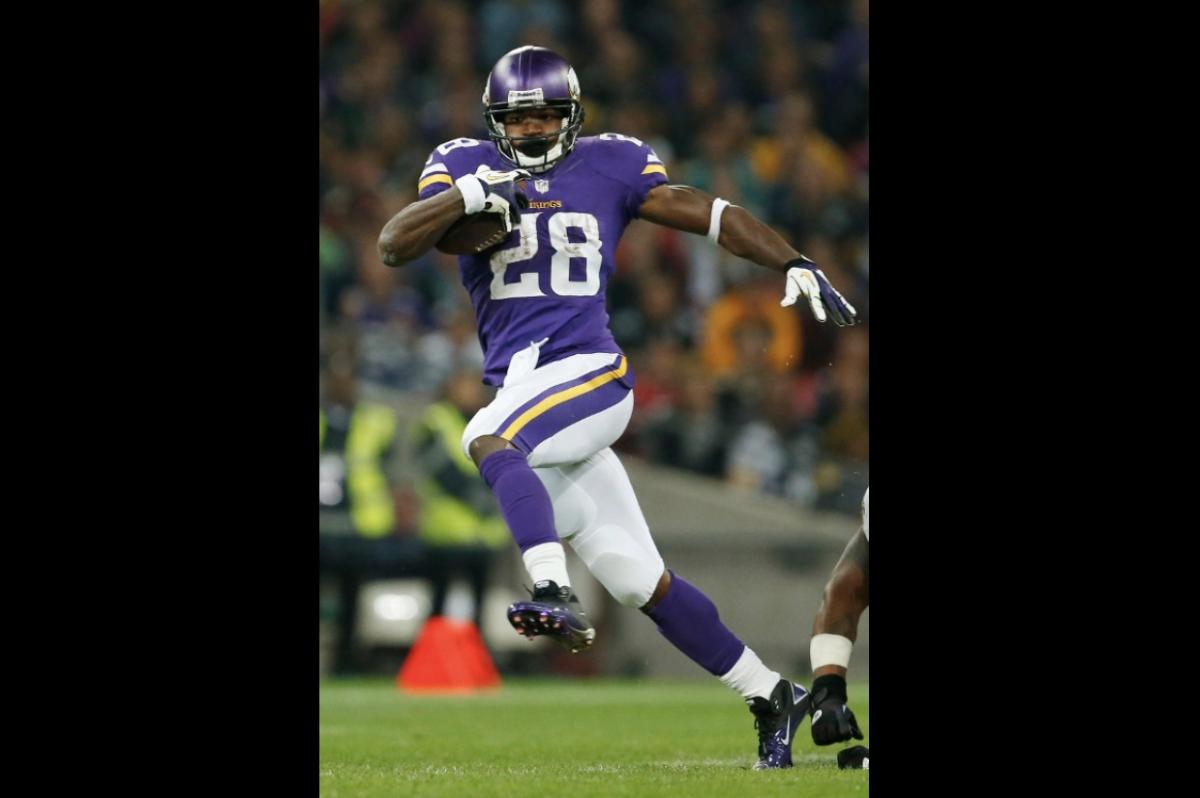
“My body has held up,” Peterson said. “I’ve been battered and broken up a little bit, but ultimately I’ve snapped back and still been able to perform at a high level. So I think it’s all a mindset and how your body responds.”
It’s indisputable that Peterson’s body isn’t normal. No human should be able to win the NFL MVP and nearly break the league’s single-season rushing record less than a year after reconstructive knee surgery. When it comes to DNA, Peterson’s is unique.
But Peterson doesn’t just set himself apart physically. Really, his mental game might be even stronger — especially now at his age.
For instance, when he tore his ACL late in 2011 — at Washington, by the way, where he has successfully rejuvenated his career — he came back the following year with “just willpower and determination, man. And faith. I just always believed.
“I remember then telling myself, ‘OK, bam. ACL, LCL. I’m gonna come back and be better than I was before,’ “ Peterson said. “So I feel like me switching my mindset instantly, that day — even though it was tough throughout the recovery and rehab process of that injury, and I had my days — I just feel like that shifted my mindset to, ‘OK, bam. I gotta come back. I gotta be better than I was before.’ And then obviously all the talk, ‘He won’t be the same,’ this, that and the other, that just made me cement that even more, like, ‘OK, let’s go.’ ”
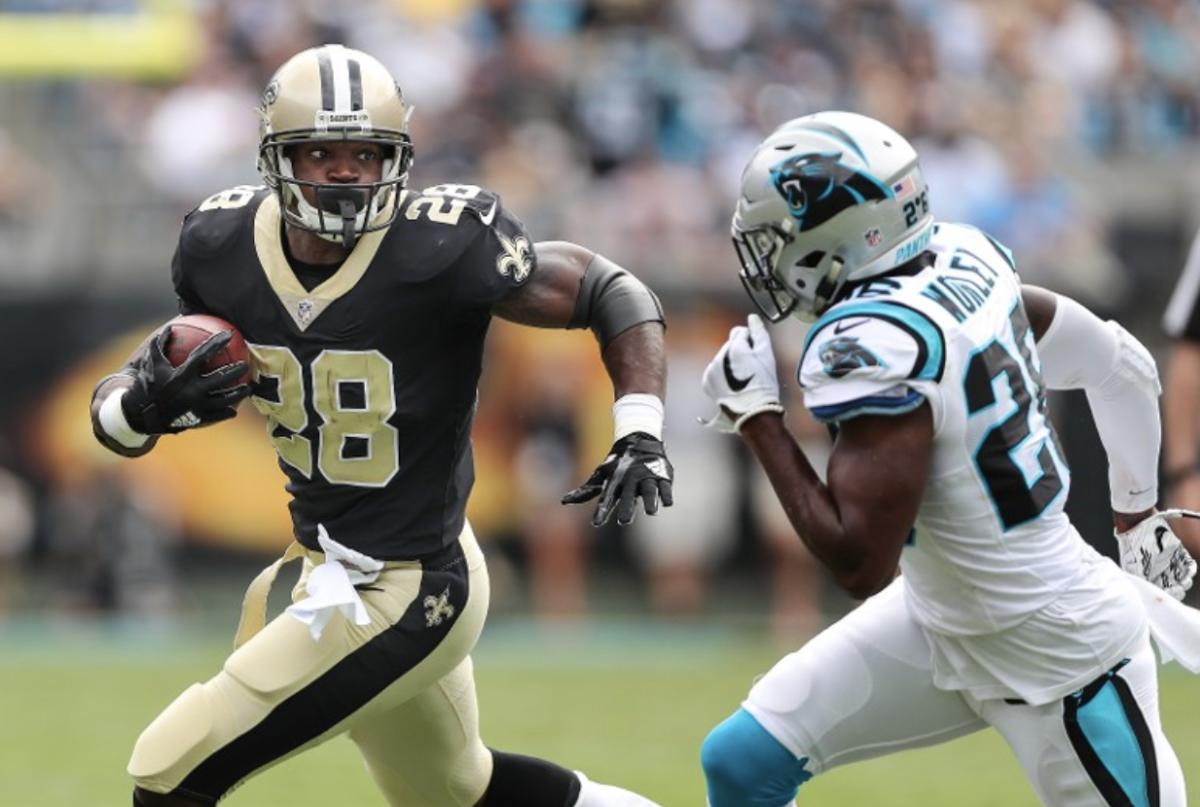
Peterson also credits his quick and complete recovery to “holistic” medicine. The power of the human mind, Peterson said, can accomplish just about anything.
“I’ve always been a big believer in anything that attacks us on earth, the earth actually has a cure for it or can heal it. I believe in that,” he said. “So I did a lot of work with some holistic doctors as well through that process, and I feel like they helped with my recovery, helped me get stronger and faster sooner.”
Don’t dismiss the possibility. Peterson not only ran for 2,097 yards in 2012 coming off the injury, he’s had three more 1,000-yard seasons since then, including two years ago when, at 33, he became the third-oldest NFL running back to surpass 1,000 yards.
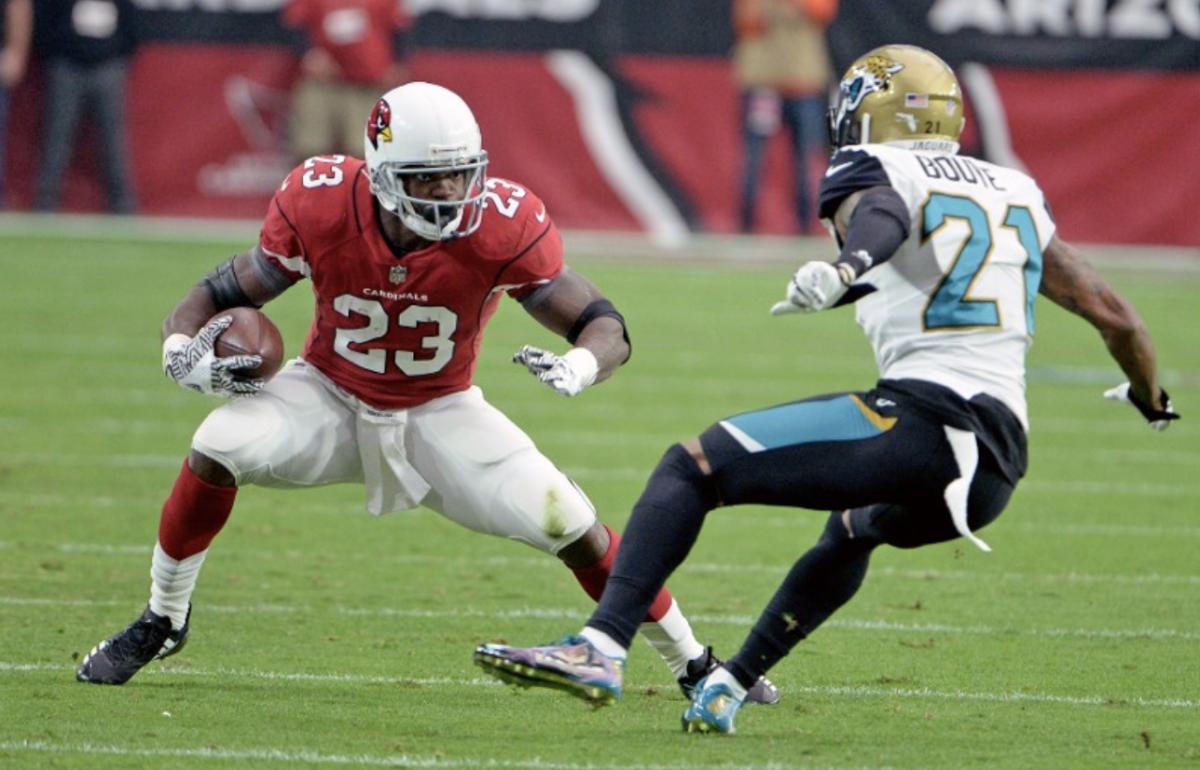
Peterson, who has one year left on his contract with Washington and fully intends to play next season, said he trains just as hard now at 35 as he did when he was 25. The reason, he said, has nothing to do with being stubborn or denying his age.
“I feel like a lot of people, the big difference from college to the NFL is when you get towards an offseason, you either put the work in or you don’t,” he said. “And a lot of guys kind of lose themselves by cutting their workout in half or not doing as much. That affects them when they’re on the field. They’re not feeling themselves. They don’t feel like they’re the same. Then you see somebody that’s in that pattern, that does that two or three offseasons in a row, you know, not saying someone can’t come back from that, but that’s a lot to rebound from.”
There’s no doubt Peterson isn’t as quick, as fast or as explosive as he was when, as a Minnesota rookie, he set the NFL’s single-game rushing record with 296 yards against San Diego. Compare highlights of that game to what he’s accomplished the last two years in Washington and you’ll see a different Adrian Peterson.
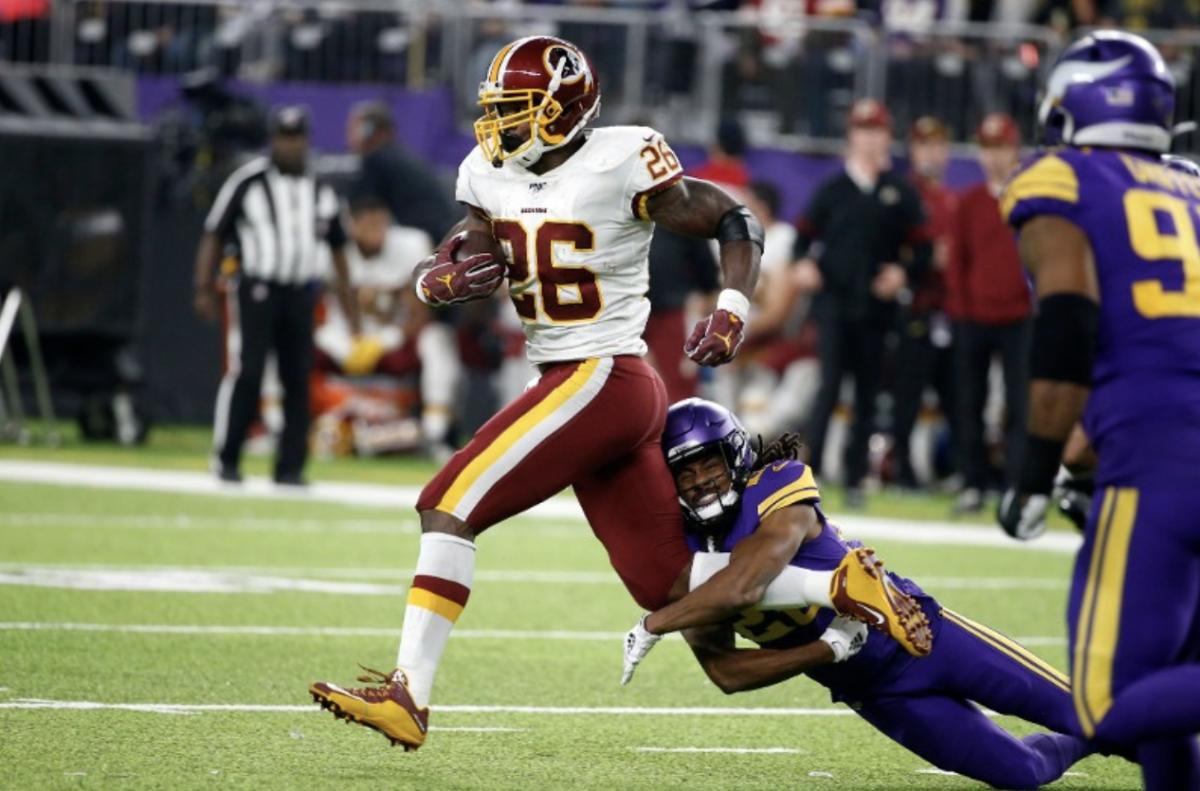
But it’s the offseason training regimen, the work he does when no one’s watching, that has allowed him to defy time.
“I’m tired right now from the workout we had at the gym with my trainer,” he said. “Full speed, full throttle. Pushing my body constantly. And then one thing I’ve learned throughout the years going into the offseason is, the longer you wait, the harder it is to get back in shape. The harder it is to knock that rust off. But as long as you’re pushing yourself and you’re getting the max out of your workout, your body’s gonna adapt.”
NFL running backs already have a short shelf life. History shows a wall that, after turning 30, few can overcome.
Peterson says he’s “heard all that crazy stuff” and stresses that any such wall is not made of stone.
“That’s why my mission is to erase that,” he said. “To write a different narrative. You know? Because we (running backs) already got it bad enough. They’re already trying to downgrade us when it comes to paying us. And then when the playoffs come around, how do these teams win? They run the ball. When it counts the most, you go to your bell cow and you’re successful. You’re playing in NFC Championship games and AFC Championship games and winning Super Bowls because of your running back.
“So the fact that they try to make it seem like running backs diminish at the age of 30, it boils me over.”
He said as many players get older, they listen to outside influences and begin to accept that age is their conqueror. They start to feel that backache, and they start to feel those creaky knees. It’s a fallacy, Peterson said.
“That’s how that narrative is able to continue,” he said. “So you have to have somebody come through and break that and let you know, hey, if you take care of your body, you put the right things in your body, you’re conscious of that all times, and you put in the work when it’s time to work, your body will show up. The body can do some amazing things if you put in the work.”
That explains, “without a doubt,” Peterson said, his post-30 renaissance in Washington. Last season he averaged 4.3 yards per carry, which is below his career average of 4.7, but better than anything he did in 2016 with the Vikings (1.9 in an injury-shortened season), 2017 with the Saints (3.0) and Cardinals (3.5) or 2018 with the Redskins (4.2). He finished 2019 with 898 total yards, which might have been another 1,000-yard campaign if head coach Jay Gruden (fired after an 0-5 start) hadn’t chosen to deactivate Peterson in the season opener.
“God created us to be way more powerful than we are now, even when it comes to playing this game of football,” Peterson said. “But as people, we’ve just got to realize that if we set these goals, what we want to accomplish, and you actually put the footwork in, you’re gonna see fruits from that labor. And you can gradually gain from that: ‘OK, I need to do this better, or I need to tweak this or tweak that.’ That’s the way that we are designed. You’ve got to believe it, have your game plan and then put in the work, and then you’ll see it come to fruition.”
———
Our Top 20 list was chosen by five voters: SI Sooners publisher John Hoover, deputy editor Parker Thune, long-time OU fan and amateur Sooner historian Anthony Jumper, OU school of journalism student Caroline Grace, and OU history and stats expert Steven Smith (aka Blinkin Riley).
The criteria was simple: former Sooners who played at OU during the last 20 years and went on to an NFL career. The rest, i.e, their NFL career, was purely subjective. Players received 20 points for a first-place vote, 19 for second, etc., down to 1 point for 20th. A total of 28 players received votes.
———
To get the latest OU posts as they happen, join the SI Sooners Community by clicking “Follow” at the top right corner of the page (mobile users can click the notifications bell icon), and follow SI Sooners on Twitter @All_Sooners.
